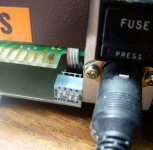RichCini
Veteran Member
Hey, Jack! Great to hear from ya; haven't seen you up here for much too long!
As a matter of fact I was thinking of sending you and Rich C. a heads-up to see if you're interested in adding the Pascal ROMs and manual to your respective repositories (if you don't already have them).
Always nice to see more AIM65 stuff see the light of day; share some of your treasures by all means, and have a great 2012!
Hey, Mike! I just downloaded the Pascal stuff and I'll post them hopefully sometime this weekend. I also have the AIM-65 DOS ROM in my shop (no hardware, though). I'll add the docs for it as well.



